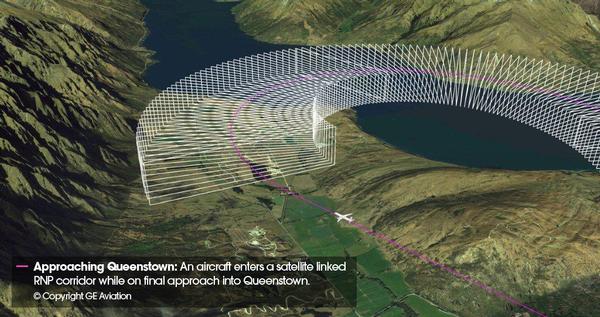Jetstar invests in technology to beat NZ weather
Friday 10 February 2012, 4:15PM
By Jetstar
1,455 views
· NZ$7.7m satellite-based navigation system to reduce weather delays
· Customers benefit from faster flight times, greater safety
· Technology brings fuel and CO2 emissions savings
Jetstar is equipping its fleet of A320 and A321 aircraft with the latest satellite-linked landing and navigation system after a New Zealand trial showed a marked improvement in safety and on-time performance.
The year-long trial at Queenstown Airport made it possible for flights to operate through most of the peak winter ski season.
Aircraft fitted with the system known as Required Navigation Performance (RNP) can safely navigate around cloud shrouded mountains, through valleys and over high terrain when low visibility would increase the chance of flight disruptions.
Unlike conventional satellite navigation systems, RNP keeps aircraft within a tight block of predetermined airspace, allowing pilots to track around ground-based obstacles in times of poor visibility or bad weather.
The Queenstown trial and similar testing at Australia’s Coolangatta and Brisbane airports showed that aircraft equipped with RNP maintained a high degree of accuracy during instrument assisted landings.
Before the Queenstown RNP trials the minimum conditions for instrument landings were 15 kilometres of visibility and 2,700 feet of cloud.
Based on the trial findings and in consultation with the Civil Aviation Authority and its Australian counterpart, the Civil Aviation Safety Authority, the minimum for RNP assisted approaches at Queenstown has been reduced to 3 kilometres of visibility and 400 feet of cloud.
After an earlier series of trials at Brisbane Airport involving Qantas aircraft, Air Services Australia reported that 4,200 minutes of flying time and 17,300 nautical miles was saved during 1,612 RNP assisted approaches. As a result more than 200,000 kg of jet fuel was saved and carbon emissions were reduced by 650,000 kg.
Jetstar Group CEO, Bruce Buchanan, said the technology made flight safer, faster and more efficient.
“Innovation is key at Jetstar, because it’s a smart way to deliver a better service and also keep costs down. This new navigation aid reduces the time spent circling due to bad weather, which helps passengers arrive on time and cuts our fuel use.
“RNP technology will also help Jetstar improve our on time performance for services flying in and out of Queenstown airport on domestic and trans-Tasman services,” Mr Buchanan said.
Jetstar’s on-time-performance for the past five months has averaged been 90 per cent, boosted through RNP and other operational improvements. The rollout of the new technology on Jetstar’s Australian and New Zealand fleet of A320s is estimated be complete by the end of 2012.
